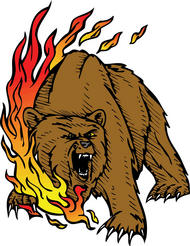|
Michael Stefano was born in the
borough of Brooklyn in the spring of 1958. He joined the FDNY in 1982, advancing to the rank of captain before his retirement
in 2005. Michael Stefano is the author of The Firefighter's Workout Book: The 30 Minute a Day Train-for-Life
Program for Men and Women.
According to the book description of
The Firefighter's Workout Book: The 30 Minute a Day Train-for-Life Program for Men and Women,
“The demands of being a firefighter can be quite high. Firefighters are called upon to perform at peak capacity under
the most arduous conditions. Being physically fit can mean the difference between life and death for them or the victims they
race to save. New York City fire captain and personal trainer Michael Stefano has come to the rescue with The Firefighter's
Workout Book, the thirty-minute-a-day, train-for-life program that's worked for New York City firefighters and will work
for you.
The Firefighter's Workout Book
covers all aspects of health and fitness, including strength, cardiovascular, and flexibility training. Captain Michael Stefano
shows how spending long hours at the gym is unnecessary or even counterproductive. Step-by-step instruction, interspersed
with motivational stories based on Stefano's experience as a firefighter, will leave you burning for more.
The workout routines can be tailored
to fit individual needs. The illustrated exercise guide features photos of New York City firefighters. You will learn how
to stay motivated, set reasonable, attainable goals, and chart your own progress to ensure results. A simple, easy-to-follow
nutrition plan is also offered.
The firefighter's workout is a
real-life approach to a very common problem: staying in good physical condition with a minimal amount of time and available
equipment. With the tools and knowledge provided by The Firefighter's Workout Book, you'll be able to rise above these
obstacles to get in the best condition of your life.”
|
